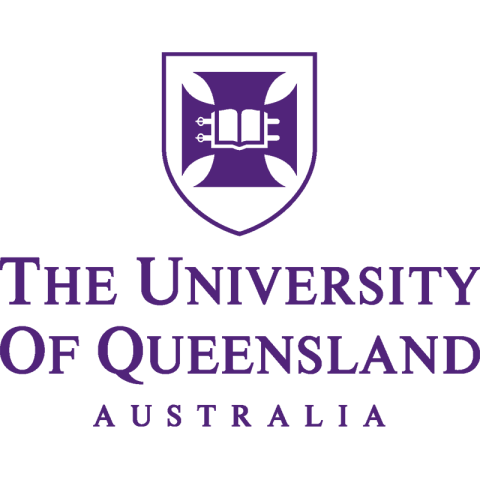
Deep and meaningful learning: taking learning to the next level
Explicitly linking prior knowledge and experience is key in engaging students in deep learning and transitions them away from passivity in learning
Traditional teaching approaches often begin with a focus on delivery of content for surface-level understanding, and students are frequently passively engaged. This is an issue for students not only when it comes to retaining the learning long term but also for understanding beyond a superficial level and recognising lessons’ wider impact.
What is meaningful learning?
At the core of the principle of deep and meaningful learning is how educators can encourage students to shift from passive engagement with problems at hand to deep thinking and feeling about learning.
In this seventh and final article in our series covering the principles in the Higher Education Learning Framework, we look at deep and meaningful learning in detail.
- Principle 1: Learning as becoming: what do students become as a result of their HE experience?
- Principle 2: Contextual learning: linking learning to the real world
- Principle 3: Emotions and learning: what role do emotions play in how and why students learn?
Learning is built on prior knowledge
The principle Deep and meaningful learning encompasses taking students beyond a surface-level understanding and passive engagement to deeper understanding that is both sustained and can be transformative through the meaning it provides to the individual. Deep learning involves engaging higher-order thinking capabilities and therefore lays the foundation for learning to be transferred to or used in new and unfamiliar contexts.
At the start of a student’s learning journey, they may be exposed to new concepts, ideas, and ways of working and thinking. This surface stage of learning is essential for making connections to prior knowledge and establishing a knowledge and skills base from which to build. As a student’s competency in and fluency with this knowledge and skills improve, they can start to contemplate more complex and interrelated ideas, as well as innovate and create. The Deep and meaningful learning principle reminds us that learning opportunities should allow students to extend, challenge, critique and create ideas.
Opportunities are needed for students to engage deeply with learning. This allows them to make connections independently and intuitively between existing knowledge and experiences and what they are learning, and furthermore to connect these to new possibilities. In this process, learners make sense of the novelty and uncertainty of new concepts and create or update mental models to aid in understanding. This process is called conceptual change.
- Principle 4: Interactive learning: more than teamwork makes the dream work
- Principle 5: Higher-order thinking: it’s not just what to learn but how to learn
- Principle 6: Learning challenge and difficulty: calm seas do not make skilful sailors
Conceptual change can manifest in a variety of ways. Unintentional change is typically working from the ground up and additive in nature. It most often relies on unconscious processes such as static and uncritiqued learning, and taking information for granted. Intentional conceptual change, on the other hand, is a top-down process; it is deliberate and requires effortful and considered thinking from learners. Examples include manipulating knowledge through deconstruction, reconstruction and transference, and critiquing resources, sources and assumptions.
In this way students are actively engaging and changing the way that they conceptualise ideas and shift to deeper levels of understanding – that is, transforming the way they think and engage. A combination of intentional and unintentional conceptual change looks like a switch between deliberate and non-deliberate thinking processes such as engaging in a learning problem, moving to an unrelated activity that subconsciously resolves the learning problem, and then returning to the original problem.
Learners can build on mental models through challenges to transfer knowledge to a novel context and begin to understand the broader context, impact and implications. New knowledge can be gained and mental models adapted to reconcile prior and new knowledge.
How can we implement Deep and meaningful learning into higher education?
This learning principle connects with many of the other principles of effective learning in the Higher Education Learning Framework, and many key concepts may be familiar to you if you have followed the series.
- Gauge students’ prior knowledge through interaction and dialogic feedback. Interact with students to assess and evaluate their knowledge through their verbal, written and behavioural responses.
- Facilitate student agency and autonomy to provide opportunities for them to explore deep learning with prompting rather than scaffolding. Encourage students to consider ways in which the learning can be applied to their own unique context and to provide justifications for their ideas.
- Provide meaning and context to learning. This helps students connect their prior knowledge and experiences to current learning. It also prompts broader understanding of what they are learning and why they are learning it.
- Challenge students to think more broadly by including complexity and challenging concepts. Complement challenge with adequate support and scaffolding so that challenge and confusion can be resolved and lead to deep learning. If confusion is left unresolved, this can lead to frustration and uncertainty.
- Encourage students to think about their learning processes and share their reasoning in learning problems with others. This promotes broader understanding of why they are doing something a certain way. Interacting with peers about their learning gives opportunities for students to learn from each other, affirm their own learning and generate novel and innovative solutions, and it gives further opportunities for them to engage in avenues that promote deep and meaningful thinking.
- Encourage students to be aware of their knowledge, knowledge gaps and unanswered questions. Students’ knowledge acquisition as well as their problem-solving and learning strategies and processes can engender critical thinking, metacognition and self-regulation capabilities.
Learning engages students in deep and meaningful thinking
When students engage in deep and meaningful learning, they can connect their new knowledge not just to existing understanding and experiences, but also to innovations and new contexts. Deep and meaningful learning experiences can enable students to appreciate the broader impacts, implications and meanings of their disciplinary knowledge and capacities.
Annemaree Carroll is head of the Science of Learning Research Centre Learning Lab; Stephanie MacMahon is programme director of the Learning Lab; Jason M Lodge and Alexandra Osika lead the Learning Lab’s work in higher education. The Science of Learning Research Centre Learning Lab, situated within the School of Education at the University of Queensland, brings together multidisciplinary researchers and interprofessional partners with the aim of transforming learning across the lifespan.
If you found this interesting and want advice and insight from academics and university staff delivered direct to your inbox each week, sign up for the Campus newsletter.
Additional Links
Read more insight into Deep and meaningful learning and other evidence-informed principles for university learning in the Science of Learning Research Centre’s Higher Education Learning Framework (HELF).
The HELF synthesises existing educational frameworks, literature, and research using a science of learning lens to produce seven principles for effective learning. These principles for learning can be used, built upon, adapted, tailored, and personalised to your unique teaching context.



_1.jpg?itok=cNYz4f0E)
